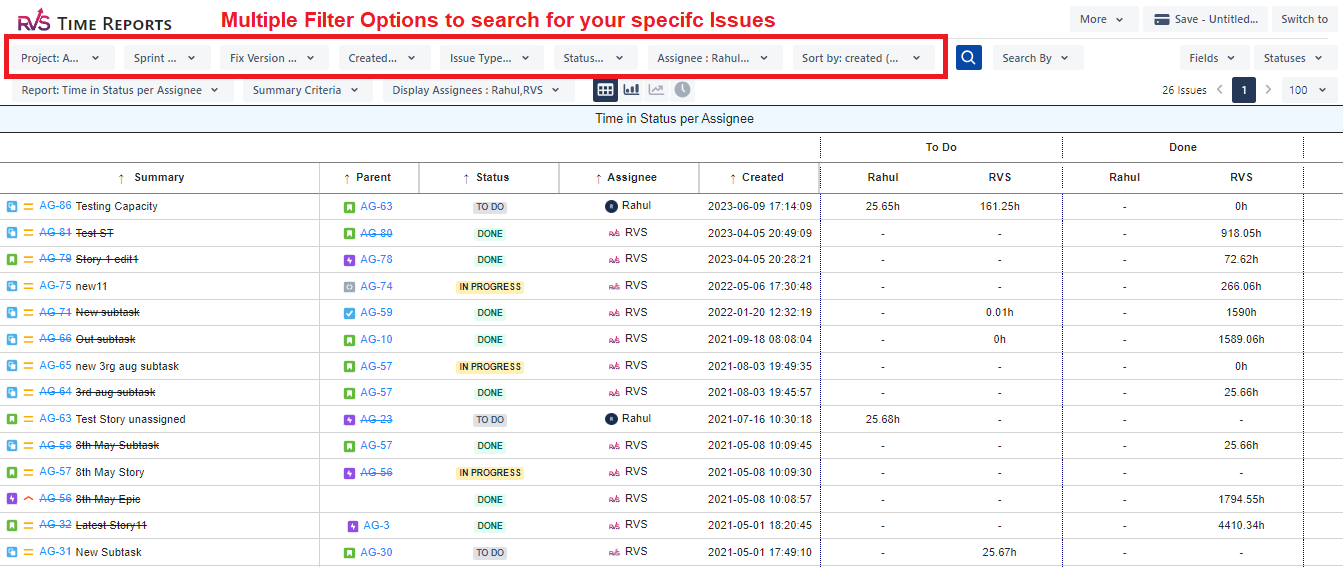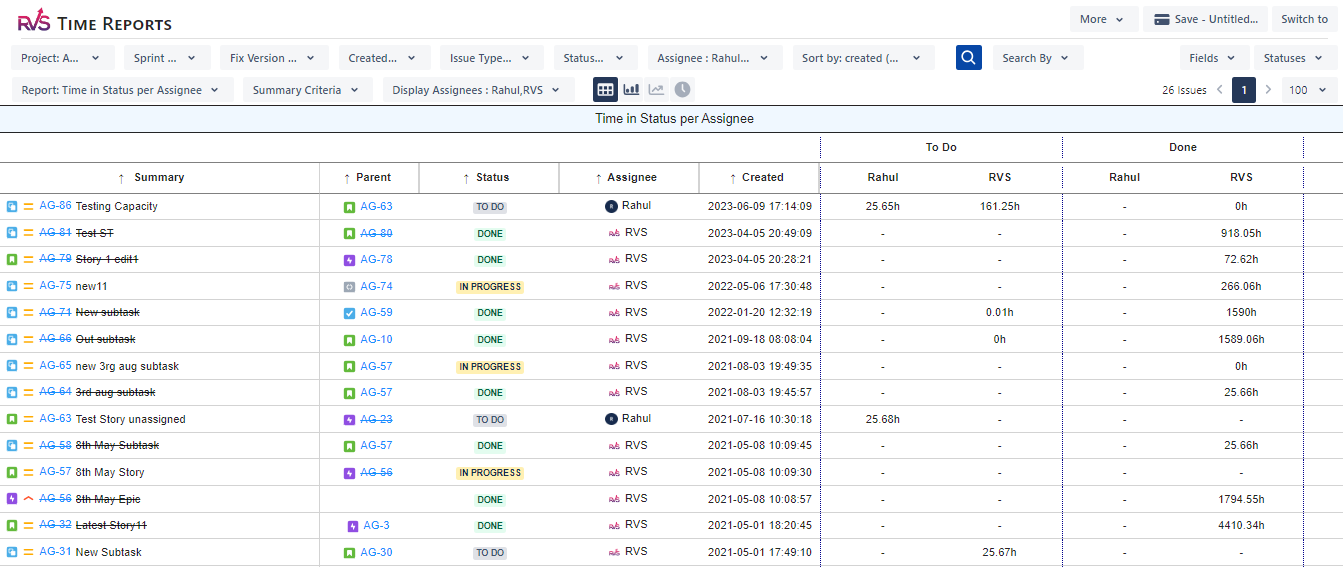Introduction
In the fast-paced world of agile project management, efficiency and transparency are key. Jira, as one of the most widely used project management tools, provides various reporting capabilities to track the progress of tasks and identify workflow inefficiencies. One crucial metric that teams focus on is Time in Status per Assignee, which helps determine how long an issue remains in a particular status while assigned to a specific individual.
This report is an essential tool for managers, scrum masters, and team leads to analyze individual performance, identify bottlenecks, and optimize resource allocation. This article delves into the significance of this report, methods to generate it in Jira, and ways to interpret the data for actionable insights.
What is Time in Status per Assignee?
Time in Status per Assignee refers to the amount of time an issue spends in a specific workflow status while being assigned to a particular team member. This metric is crucial for understanding:
The efficiency of individual team members in resolving issues.
- Workflow bottlenecks that cause delays in task progression.
- Workload distribution and resource optimization.
- Potential areas for process improvement.
Why is This Report Important?
- Identifies Delays and Bottlenecks – Helps teams pinpoint where issues are getting stuck and which assignees might need additional support.
- Improves Accountability – Ensures that every team member is aware of their contribution to issue resolution.
- Enhances Performance Evaluation – Provides data-driven insights into individual and team performance.
- Optimizes Workflow Efficiency – Enables managers to streamline processes and enhance team collaboration.
- Facilitates Better Resource Allocation – Helps balance workloads and prevent individual team members from being overwhelmed.
How to get the Jira Time in Status per Assignee report
- Install the Jira Time in Status Reports app from the Atlassian marketplace.
- Search your issues with multiple filter options
- Select the “Time in Status per assignee” report.
- This is a more granular report to track the various statuses the issues have gone through and in those statuses they were with which assignee.
- You can also add/remove fields from the report and also focus on time in specific statuses for your issues by selecting the desired ones from the Status dropdown.


Interpreting the Time in Status per Assignee Report
Key Metrics to Analyze
- Total Time in Status per Assignee – The cumulative time each assignee spends in various statuses.
- Average Time in Status per Assignee – Helps compare performance among team members.
- Status Transition Trends – Identifies frequent blockers and inefficiencies.
- Cycle Time per Assignee – Evaluates the time from issue assignment to resolution.
- Lead Time per Assignee – Measures the time from issue creation to resolution for individual team members.
Identifying Patterns and Issues
- Prolonged Time in "In Progress" Status – May indicate task complexity or inefficiency.
- Frequent Reassignments – Could suggest unclear responsibilities or task dependencies.
- High Time Spent in "Review" Status – Might signal bottlenecks in quality control or approvals.
Conclusion
The Time in Status per Assignee Jira report is an invaluable tool for teams aiming to enhance efficiency, improve accountability, and optimize workflow processes. Whether using Jira’s built-in reports, add-ons, or custom API integrations, this report provides critical insights into how tasks move through the workflow and how effectively team members contribute to issue resolution.
By implementing best practices and leveraging the right tools, organizations can improve project transparency, reduce inefficiencies, and ensure that tasks are completed promptly. Investing in the right reporting strategies will ultimately lead to a more productive and streamlined development or project management process.
For more information, visit here and get a 30-day free trial for Time In Status Reports by RVS now.
